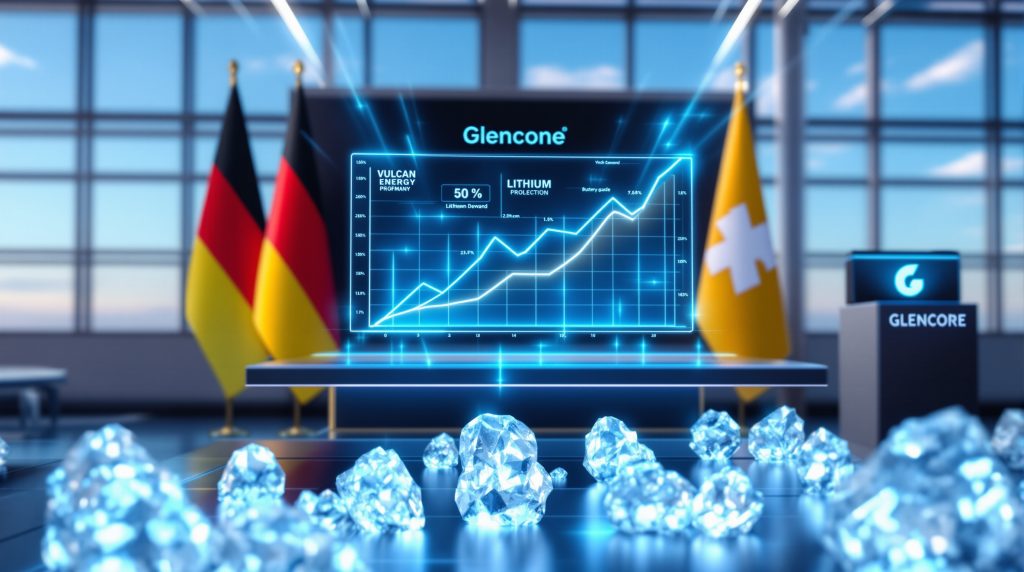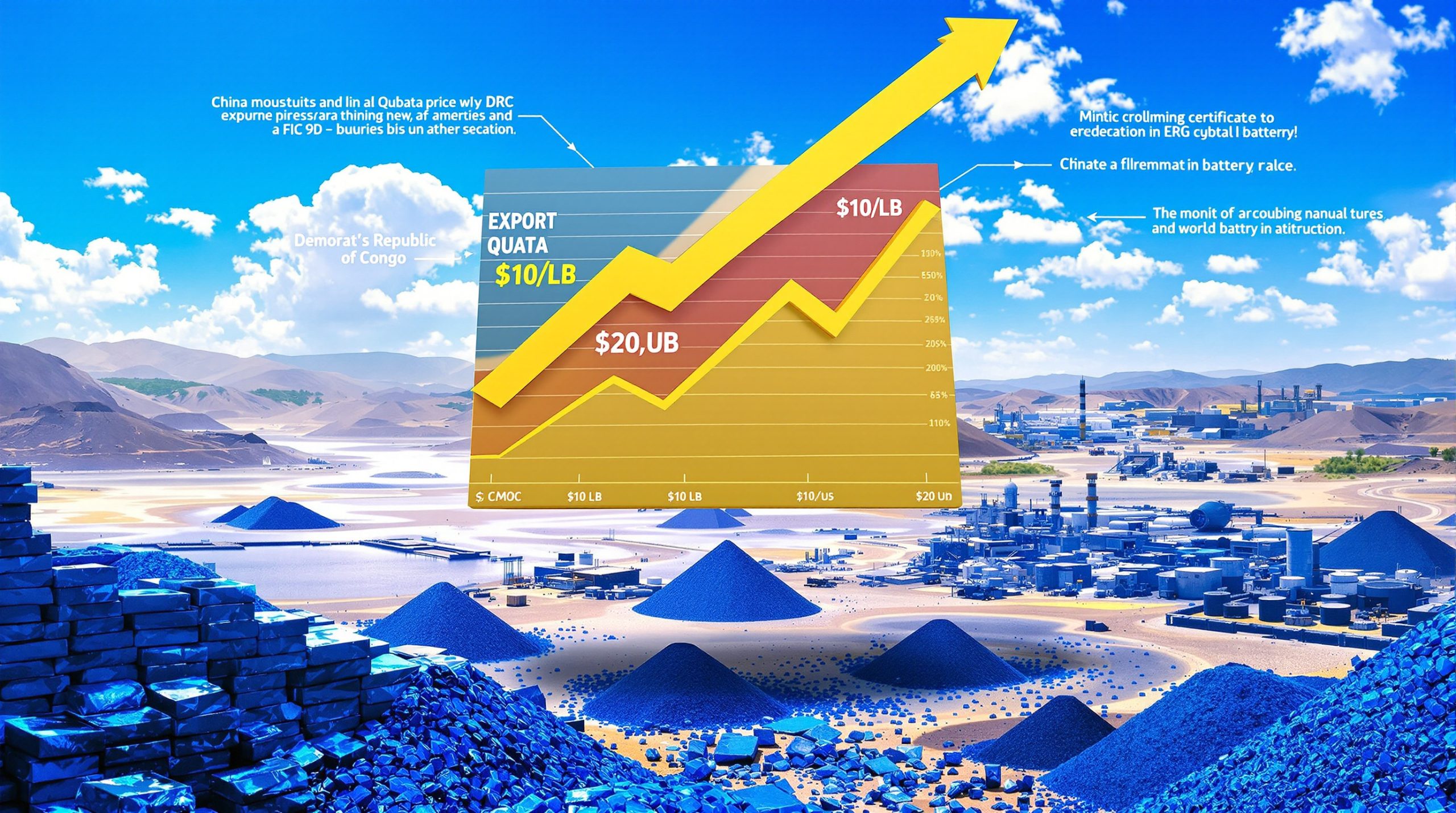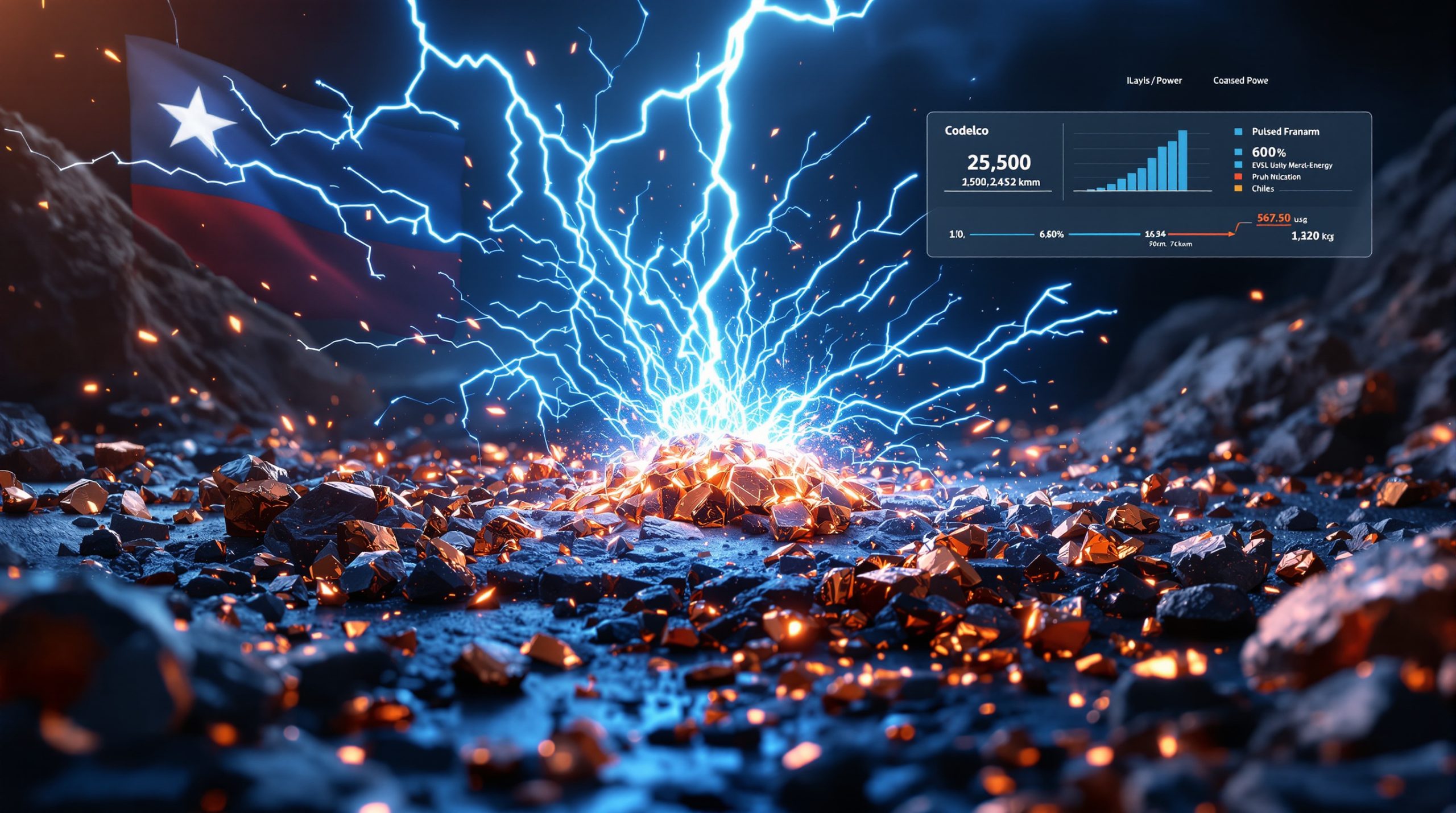Understanding Binding Lithium Offtake Agreements: Strategic Partnerships in the Battery Supply Chain
Binding lithium offtake agreements have emerged as crucial instruments in the rapidly evolving battery materials marketplace. These contractual arrangements establish clear obligations between lithium producers and buyers, creating the foundation for project financing while securing critical supply chains. As the electric vehicle revolution accelerates, these agreements have become increasingly sophisticated, balancing the needs of producers, traders, and end-users in an environment of volatile pricing and surging demand.
Definition and Key Components
Binding lithium offtake agreements are legally enforceable contracts that guarantee future lithium supply and purchase commitments. Unlike memorandums of understanding or letters of intent, these agreements create specific obligations with financial consequences for non-compliance.
The core components typically include:
- Volume commitments specifying minimum and maximum quantities
- Detailed delivery schedules with specified timeframes
- Take-or-pay clauses ensuring financial commitment regardless of actual offtake
- Pricing mechanisms that may include fixed, indexed, or hybrid models
- Product specifications defining chemical composition and physical properties
- Term duration, typically ranging from five to ten years
According to Benchmark Mineral Intelligence, approximately 75% of lithium offtake agreements signed in 2023-2024 included take-or-pay provisions specifically designed to secure financing commitments. This trend reflects the critical role these agreements play in project development.
Strategic Importance in the Lithium Supply Chain
The strategic value of binding offtake agreements extends throughout the battery supply chain:
- For producers, they provide revenue certainty essential for securing investment
- For buyers, they lock in supply of critical materials in an increasingly competitive market
- For lenders, they demonstrate bankable future cash flows
- For the market, they establish price signals and demand indicators
The average duration of binding lithium offtake agreements has increased significantly, from 3-5 years (2018-2020) to 6-10 years (2023-2024), reflecting increased demand certainty requirements and the strategic importance of securing long-term supply positions.
As Simon Moores, CEO of Benchmark Mineral Intelligence, noted in a Mining.com interview: "Binding offtake agreements have become the cornerstone of lithium project financing, with lenders requiring at least 60-70% of planned production to be contracted before providing debt facilities."
How Lithium Offtake Agreements Impact Project Financing
The connection between binding offtake agreements and project financing represents perhaps the most critical relationship in lithium project development. Without secured offtake, most projects struggle to attract the capital needed for construction and commissioning.
Critical Role in Securing Investment
For lithium projects seeking debt financing, offtake agreements function as essential collateral. According to Wood Mackenzie research, lithium hydroxide projects typically require 60-80% of nameplate capacity to be under binding offtake agreements to secure project financing.
These agreements impact financing in multiple ways:
- Demonstrating project viability to potential investors and lenders
- Establishing predictable revenue streams for debt service coverage calculations
- Reducing perceived market risks through guaranteed sales
- Accelerating financial close timelines by satisfying key lender requirements
- Providing frameworks for calculating project ROI and payback periods
The financial impact is substantial. According to Canaccord Genuity's Battery Metals Mining Finance Report, projects with secured offtake agreements can achieve 150-200 basis points lower interest rates on debt financing compared to projects without offtake agreements.
Favorable Debt Structures
Projects with strong offtake agreements can often secure more favorable financing terms. Lithium projects with secured offtake agreements covering 70%+ of production can typically achieve 60:40 to 70:30 debt-to-equity ratios, compared to 40:60 or lower for projects without secured offtakes.
This improved debt-to-equity ratio significantly enhances potential returns for equity investors while reducing the amount of equity capital required for project development.
Howard Klein, founder of RK Equity, aptly described this evolution: "The lithium market has evolved from a merchant market to a contract-based market where offtake agreements essentially function as pre-revenue revenue, making projects bankable in ways they weren't five years ago."
Why Major Resource Companies Are Pursuing Lithium Offtake Deals
The rush by major resource companies to secure lithium offtake agreements reflects a strategic repositioning within the mining sector, as traditional players seek to capitalize on the energy transition.
Evolving Battery Materials Marketplace
Several fundamental market shifts are driving interest in lithium offtake deals:
- Unprecedented demand forecasts driven by accelerating EV adoption
- Supply constraints creating a competitive acquisition environment
- Strategic positioning for future battery metals investment opportunities
- Vertical integration trends across mining and manufacturing
- ESG considerations influencing sourcing decisions
The International Energy Agency projects global EV sales to reach 17 million units in 2024 and could exceed 40 million by 2030 under their stated policies scenario. This translates to dramatic growth in lithium demand, projected to increase from approximately 890,000 tonnes LCE (lithium carbonate equivalent) in 2023 to between 2-3 million tonnes LCE by 2030.
Benchmark Mineral Intelligence forecasts potential lithium supply deficits beginning in 2027-2028 as demand growth outpaces new production capacity additions, creating strategic incentives to lock up supply.
Glencore's Strategic Lithium Portfolio Expansion
Glencore's pursuit of lithium offtake agreements represents a strategic diversification from its traditional commodity focus. As of 2024, Glencore has made multiple strategic moves into battery materials, including:
- Trading activities in lithium chemicals through established commodity networks
- Strategic partnerships with lithium producers
- Positioning as an intermediary between producers and end-users
This strategy leverages Glencore's global trading expertise while strengthening its position in the European battery supply chain. The company joins other major resource companies like BHP, which announced plans to invest up to $10 billion in developing battery materials supply chains, including exploring lithium opportunities through partnerships and potential acquisitions.
As Chris Berry, lithium analyst and founder of House Mountain Partners, observed: "Traditional commodity traders like Glencore are entering the lithium space because they recognize the structural demand shift and want to position themselves as intermediaries in a market that's projected to grow 5-6x over the next decade."
What Makes the Vulcan-Glencore Agreement Significant
The binding lithium offtake agreement with Glencore represents a significant milestone in European lithium supply chain development, bringing together an innovative producer and a global commodities powerhouse.
Deal Structure and Volume Commitments
The Vulcan-Glencore agreement includes several key elements that make it noteworthy:
- Volume commitment of 36,000-44,000 tonnes of battery-grade lithium hydroxide monohydrate over eight years
- Binding take-or-pay arrangement establishing financial guarantees
- Flexible volume placement options until December 31, 2026
- Glencore sales agent services for potential volume reallocation
- Strategic positioning within the European battery materials ecosystem
This represents a substantial portion of Vulcan's planned Phase One Lionheart Project capacity of 24,000 tonnes of lithium hydroxide monohydrate annually.
Production Capacity and Market Impact
The scale of Vulcan's Phase One project positions it as a significant contributor to European lithium supply:
- Annual capacity sufficient for approximately 500,000 electric vehicles
- 275 GWh power generation capacity from integrated geothermal operations
- Strategic contribution to European battery material self-sufficiency
- Reduced carbon footprint compared to traditional lithium production methods
This production volume is particularly significant given each battery electric vehicle requires approximately 8-12 kg of lithium hydroxide monohydrate, depending on battery chemistry and vehicle size.
Cris Moreno, Vulcan Energy Managing Director and CEO, highlighted the strategic fit: "With this agreement – a key requirement for Phase One financing – Vulcan has now achieved a good mix of offtake partners for Phase One lithium production: an automaker, a battery maker, a cathode manufacturer, and a commodities trader, all with a strong European focus."
How This Agreement Fits Within Vulcan's Broader Strategy
The Glencore offtake agreement represents the completion of a strategic diversification of customer relationships across the battery value chain, positioning Vulcan with balanced exposure to various market segments.
Diversified Offtake Partner Portfolio
Vulcan has methodically assembled a portfolio of offtake partners that spans the battery value chain:
- Stellantis (automotive manufacturer) – agreement signed May 2021
- LG Energy Solution (battery producer) – agreement signed June 2021
- Umicore (cathode manufacturer) – agreement signed September 2021
- Glencore (commodity trader) – most recent addition
This diversification serves multiple strategic purposes:
- Reducing counterparty risk by avoiding dependence on a single customer
- Creating natural hedges against different segments of the battery market
- Establishing relationships throughout the value chain
- Building a primarily European customer base aligning with production location
All agreements are described as binding take-or-pay contracts with durations between six and ten years, providing a solid foundation for project financing.
Project Development Timeline
The Glencore agreement represents a key milestone in Vulcan's development timeline:
- Q4 2025 target for finalizing Phase One financing package
- Construction of commercial plants to follow financial close
- Phased production ramp-up approach aligned with European battery manufacturing growth
- Potential for additional offtake agreements with European automakers until December 2026
The flexibility retained in the Glencore agreement allows Vulcan to continue discussions with "multiple other potential customers, including German and European automakers," potentially optimizing its customer mix as project development progresses.
Pricing Mechanisms in Modern Lithium Offtake Agreements
The evolution of pricing mechanisms in lithium offtake agreements reflects the market's maturation and the lessons learned from extreme price volatility in recent years.
Evolving Pricing Structures
The lithium market has experienced unprecedented volatility, with prices ranging from approximately $80,000/tonne (peak November 2022) to around $10,000-15,000/tonne (Q4 2023) for lithium carbonate. This volatility has driven innovation in contract pricing mechanisms:
- Fixed price arrangements: Set dollar amount per tonne throughout contract term
- Index-based floating prices: Tied to published price indices (e.g., Fastmarkets, Benchmark, Asian Metal)
- Floor-ceiling (collar) models: Establishing minimum returns while capturing upside
- Basket approaches: Combining multiple pricing mechanisms weighted by percentage
Each approach balances different priorities between price certainty and market participation.
Vulcan's Strategic Pricing Approach
According to the available information, Vulcan has implemented "a basket of fixed, floor-ceiling, and index-based floating prices during the proposed debt payback period" across its offtake agreements.
This mixed approach provides several advantages:
- Fixed components offer revenue certainty essential for debt service
- Floor-ceiling elements protect against extreme market volatility
- Index-based floating components allow participation in market upside
- Strategic alignment with proposed debt payback period
Caspar Rawles, Chief Data Officer at Benchmark Mineral Intelligence, explains: "The shift from fixed pricing to more sophisticated basket mechanisms reflects market maturation and the lessons learned from 2022-2023 price volatility. Floor-ceiling structures typically set floors at 30-50% below market prices and ceilings at 20-40% above, allowing producers to maintain minimum revenues while sharing upside with customers."
This evolution mirrors similar developments in other commodity markets as they mature and develop more sophisticated pricing mechanisms.
How Lithium Offtake Agreements Support European Battery Supply Chains
The development of domestic European lithium production, supported by binding offtake agreements, represents a cornerstone of the continent's strategy to build autonomous battery supply chains.
Regional Self-Sufficiency Goals
The European Union has established ambitious goals for battery supply chain independence through several key initiatives:
- The European Battery Alliance aims to establish 13-14 battery gigafactories by 2025 with combined capacity of 500 GWh
- The EU Critical Raw Materials Act, adopted in March 2024, sets specific targets:
- At least 10% of the EU's annual consumption of strategic raw materials to be extracted in the EU
- At least 40% of the EU's annual consumption to be processed in the EU
- No more than 65% of the EU's annual consumption of each strategic raw material from a single third country
These policies create a supportive environment for European lithium production and processing projects like Vulcan's.
Strategic Benefits of Local Production
The development of European lithium production, facilitated by binding offtake agreements, delivers multiple strategic benefits:
- Reduced supply chain vulnerabilities and transportation costs
- Lower carbon footprint from shortened logistics networks
- Improved traceability and compliance with sustainability regulations
- Enhanced security of supply for European manufacturers
- Accelerated technology development through regional collaboration
Traditional lithium production methods (hard rock mining in Australia with processing in China, or South American brine operations) generate approximately 15-20 tonnes CO2e per tonne of lithium hydroxide produced. Vulcan's direct lithium extraction process, using renewable geothermal energy, claims to produce lithium with near-zero or negative carbon footprint.
As Maroš Šefčovič, European Commission Vice President, stated: "Europe's battery industry requires secure, sustainable, and local sources of lithium and other critical materials. Domestic production projects like Vulcan's are essential to reducing our dependency on imports and building true strategic autonomy."
Flexibility Features in Modern Lithium Offtake Agreements
As the lithium market matures, offtake agreements have evolved to include greater flexibility for both producers and customers, reflecting the dynamic nature of the rapidly developing battery materials market.
Evolving Contract Structures
Modern lithium offtake agreements typically incorporate several flexibility mechanisms:
- Volume tolerance bands allowing annual variations (typically ±10-20%)
- Ramp-up schedules with graduated volume commitments during initial production
- Quality specification adjustment periods during production stabilization
- Reallocation rights enabling broader customer diversification
- Sales agent arrangements facilitating market access
These provisions help balance the need for contractual certainty with the realities of new project development and evolving market conditions.
Vulcan-Glencore Agreement Flexibility
The Vulcan-Glencore agreement incorporates notable flexibility features:
- Optional volume placement with additional European customers until December 31, 2026
- Glencore sales agent services for reallocated volumes
- Ongoing discussions with potential additional customers
- Particular interest reported from German and European automakers
This flexibility allows Vulcan to continue optimizing its customer portfolio while maintaining the security of the binding offtake commitment with Glencore.
As Andrew Miller, Chief Operating Officer at Benchmark Mineral Intelligence, noted: "The inclusion of flexibility provisions has become increasingly common as producers seek to maintain optionality while customers demand commitment. These typically include volume adjustment clauses (±10-15%), product specification evolution provisions, and reallocation rights during ramp-up phases."
Future Trends in Lithium Offtake Agreements
The evolution of lithium offtake agreements continues as the market matures and stakeholders incorporate lessons from early contract structures. Several key trends are emerging that will shape the next generation of agreements.
Emerging Contract Innovations
Future lithium offtake agreements are likely to incorporate:
- ESG performance linkages affecting pricing and terms
- Carbon footprint considerations in supplier selection and pricing
- Increased transparency requirements throughout supply chains
- Technology sharing and co-development provisions
- Circular economy considerations for material recycling and reuse
These innovations reflect the broader sustainability focus of the battery and electric vehicle industries, as well as the increasing sophistication of market participants.
Market Evolution Expectations
The lithium offtake market is expected to evolve in several key ways:
- Growing competition for limited high-quality lithium supplies
- Longer-term contracts securing strategic supply positions
- More sophisticated pricing mechanisms reflecting market maturity
- Increased integration with battery recycling breakthrough technologies
- Greater emphasis on traceability and responsible sourcing
As the market matures, we can expect to see convergence around standard contract structures that balance the needs of producers, traders, and end-users while accommodating the unique characteristics of different lithium production methods and end-use applications.
FAQ: Lithium Offtake Agreements
What is the difference between binding and non-binding offtake agreements?
Binding agreements create legal obligations for both parties with specific volume commitments and financial consequences for non-compliance. Non-binding agreements (often MOUs or term sheets) express intent but lack enforceable commitments and primarily serve as preliminary negotiation frameworks. Lenders typically require binding agreements to support project financing.
How do offtake agreements impact lithium project valuations?
Offtake agreements significantly enhance project valuations by demonstrating guaranteed future revenue streams, reducing market risk perceptions, enabling debt financing on favorable terms, establishing clear paths to commercialization, and validating product quality through buyer commitments. Projects with binding offtake agreements typically achieve higher valuations and lower costs of capital.
What risks exist in long-term lithium offtake agreements?
Key risks include price volatility if fixed-price mechanisms are used, technological changes affecting product specifications, counterparty financial stability concerns, production delays impacting delivery schedules, and regulatory changes affecting contract performance or enforcement. Most modern agreements include provisions to mitigate these risks through flexible pricing mechanisms and force majeure clauses.
How are sustainability factors incorporated into modern lithium offtake agreements?
Sustainability is increasingly integrated through carbon footprint requirements, responsible mining certifications, water usage limitations, community impact considerations, and traceability provisions that ensure compliance with evolving ESG standards across the supply chain. European buyers in particular are prioritizing low-carbon lithium sources to support their own sustainability commitments and may benefit from Australian lithium tax breaks.
What role do traders like Glencore play in lithium markets?
Traders provide market liquidity, risk management expertise, logistics and distribution networks, market intelligence, financing solutions, and bridge connections between producers and end-users. Their involvement is particularly valuable in rapidly evolving markets like lithium, where price discovery and market access mechanisms are still developing, especially for projects establishing a new battery-grade lithium refinery.
Want to Catch the Next Major Mining Discovery Before the Market Does?
Discover why significant mineral discoveries can lead to substantial investment returns by exploring Discovery Alert's dedicated discoveries page at https://discoveryalert.com.au/discoveries/, where our proprietary Discovery IQ model provides real-time alerts on ASX announcements, giving you a crucial market advantage.




